Abstract
We investigated correspondence between verbal and nonverbal behavior in preschool children in a play setting. Four children (4 years old) participated in a multiple baseline across subjects design. Children were asked what toy(s) they were going to play with during an immediately upcoming play period. When no contingencies were placed on either verbal or nonverbal behavior, children showed high rates of correspondence. When children were required to verbalize about a toy from a restricted range of infrequently used toys, but no contingencies were placed on correspondence, low rates of correspondence were observed. High rates of correspondence were noted when reinforcement was contingent on it. Results are discussed in terms of tacting and manding.
Full text
PDF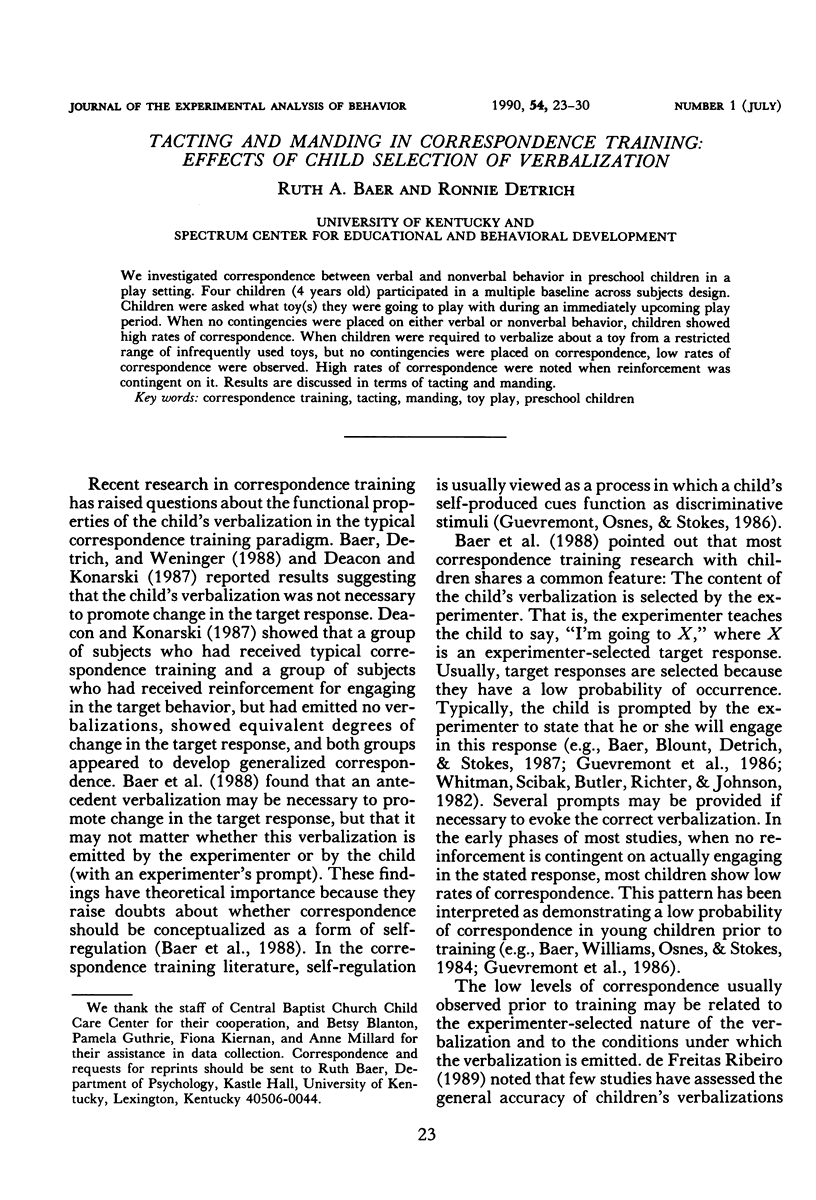
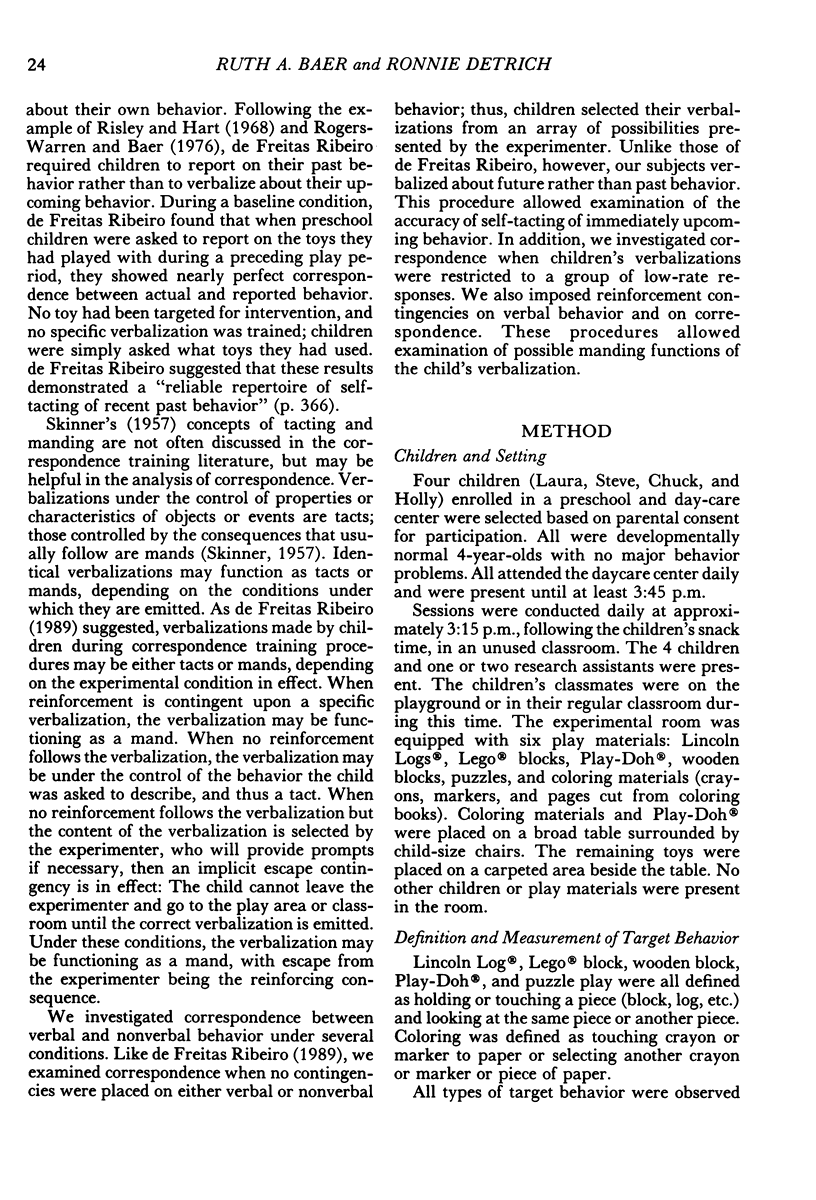
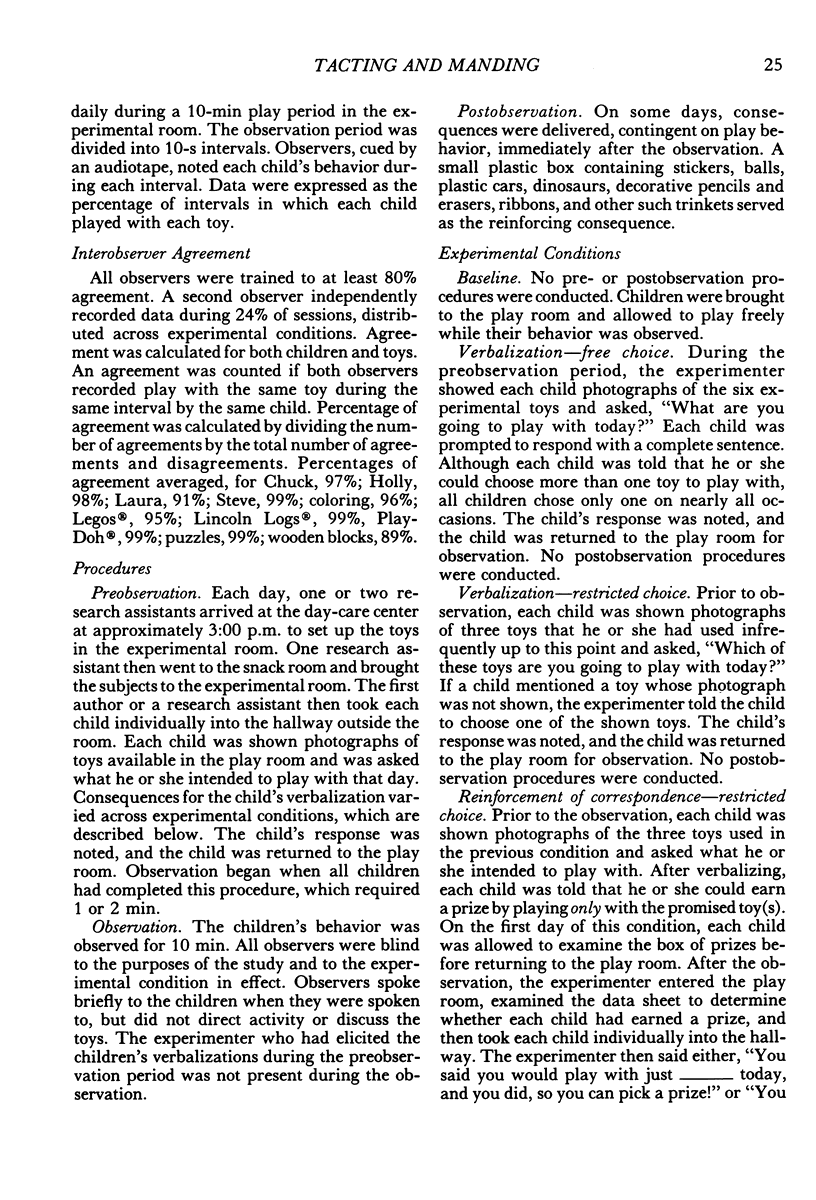
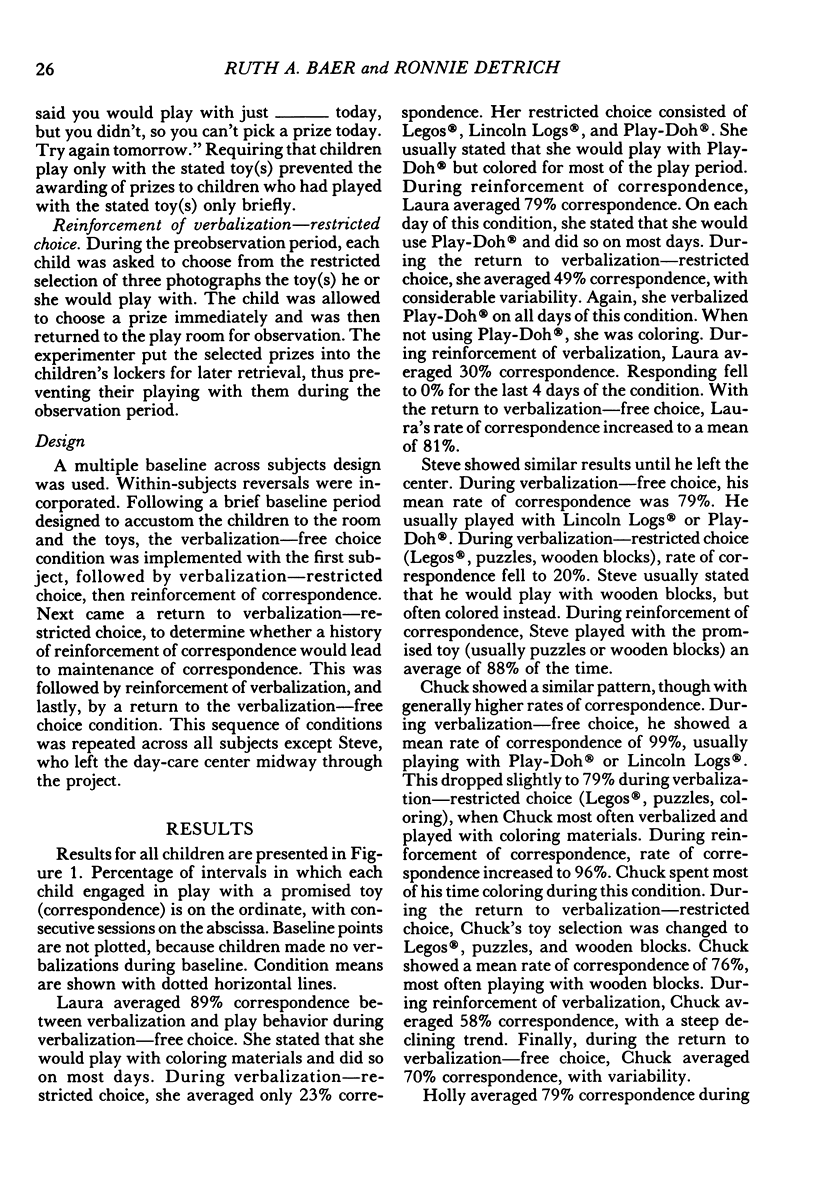
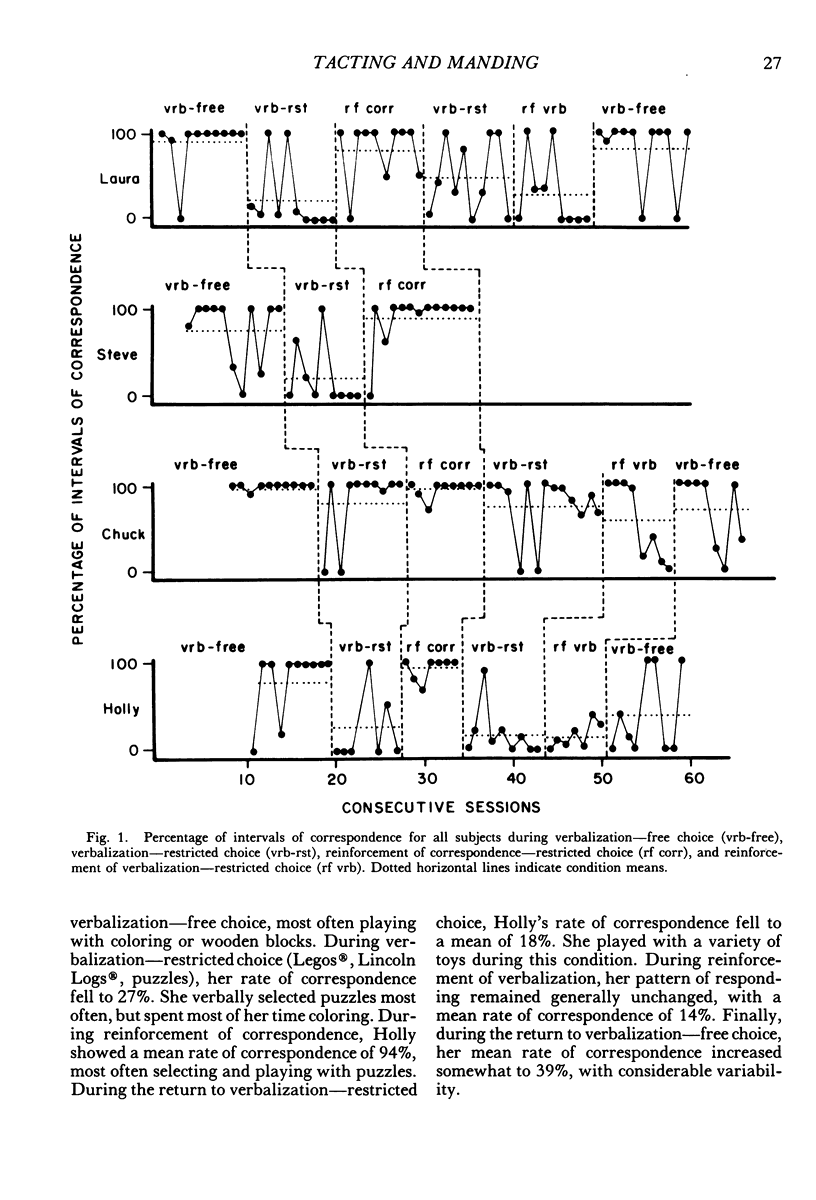
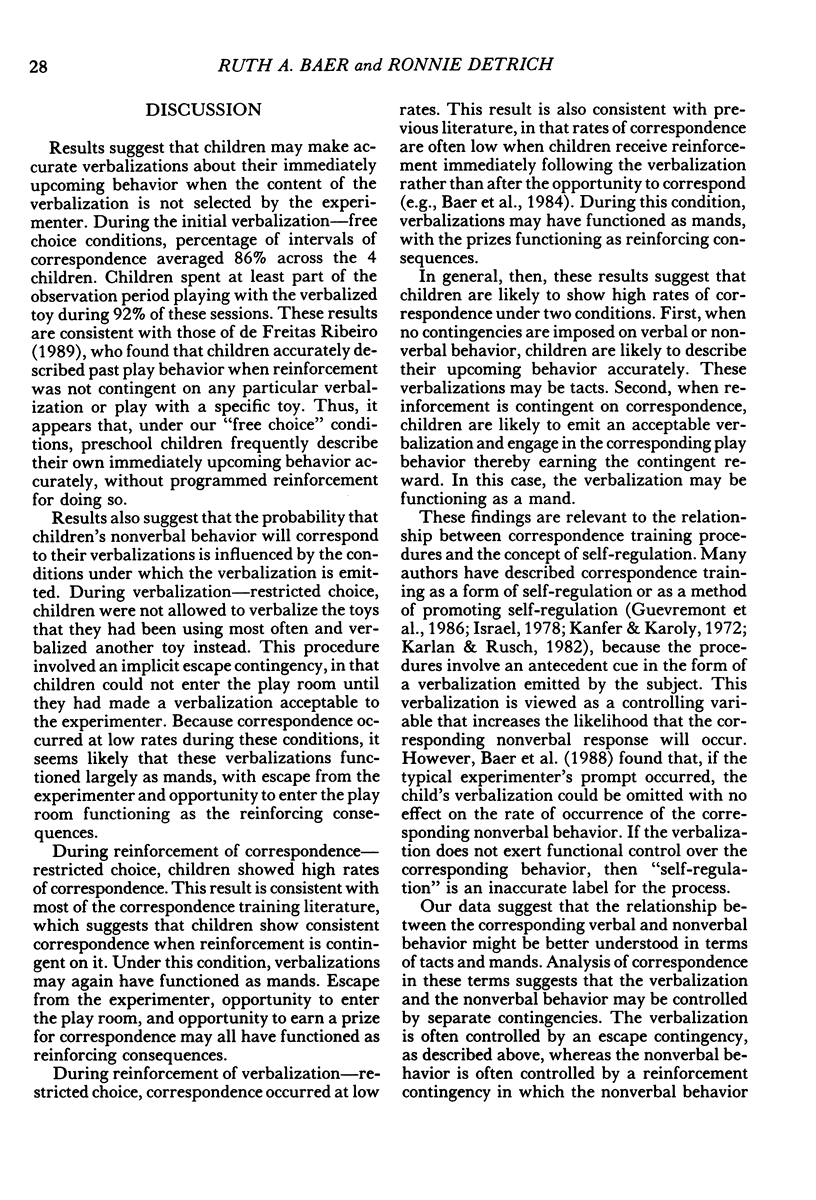
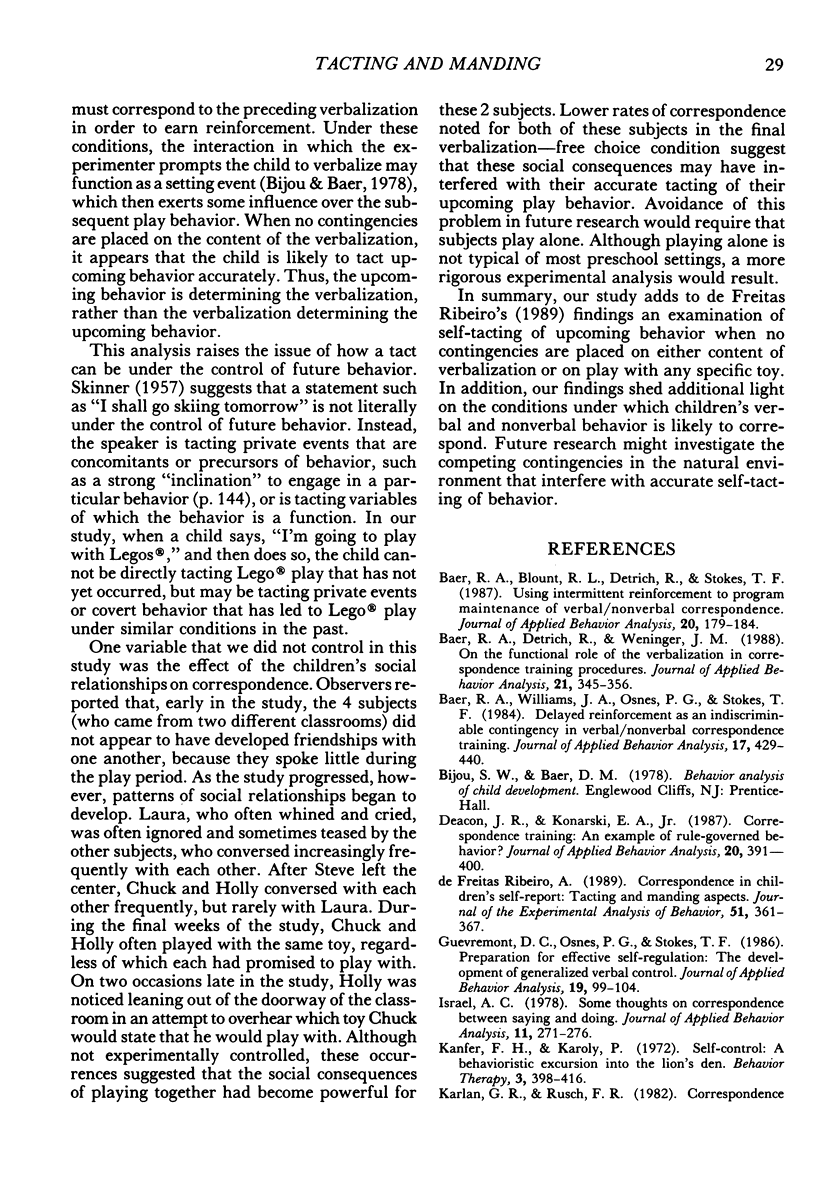
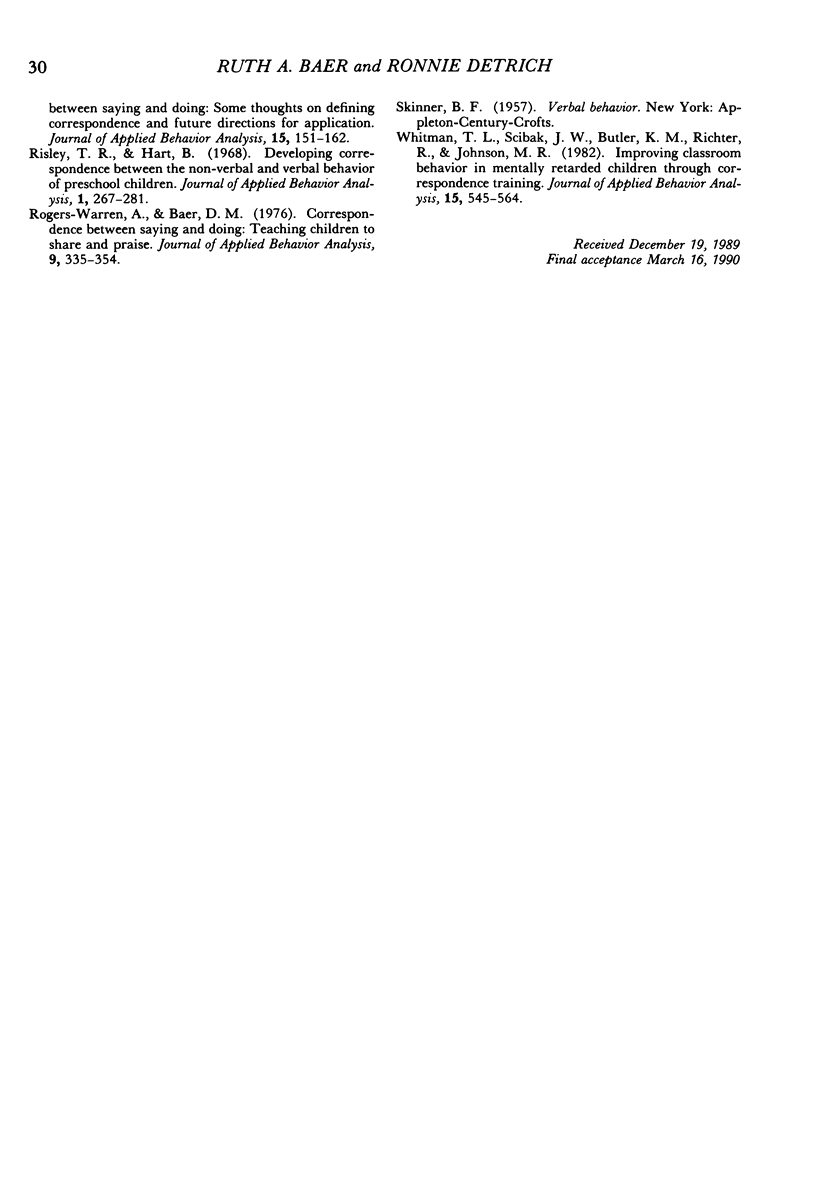
Selected References
These references are in PubMed. This may not be the complete list of references from this article.
- Baer R. A., Blount R. L., Detrich R., Stokes T. F. Using intermittent reinforcement to program maintenance of verbal/nonverbal correspondence. J Appl Behav Anal. 1987 Summer;20(2):179–184. doi: 10.1901/jaba.1987.20-179. [DOI] [PMC free article] [PubMed] [Google Scholar]
- Baer R. A. On the functional role of the verbalization in correspondence training procedures. J Appl Behav Anal. 1988 Winter;21(4):345–356. doi: 10.1901/jaba.1988.21-345. [DOI] [PMC free article] [PubMed] [Google Scholar]
- Baer R. A., Williams J. A., Osnes P. G., Stokes T. F. Delayed reinforcement as an indiscriminable contingency in verbal/nonverbal correspondence training. J Appl Behav Anal. 1984 Winter;17(4):429–440. doi: 10.1901/jaba.1984.17-429. [DOI] [PMC free article] [PubMed] [Google Scholar]
- De Freitas Ribeiro A. Correspondence in children's self-report: Tacting and manding aspects. J Exp Anal Behav. 1989 May;51(3):361–367. doi: 10.1901/jeab.1989.51-361. [DOI] [PMC free article] [PubMed] [Google Scholar]
- Deacon J. R., Konarski E. A., Jr Correspondence training: an example of rule-governed behavior? J Appl Behav Anal. 1987 Winter;20(4):391–400. doi: 10.1901/jaba.1987.20-391. [DOI] [PMC free article] [PubMed] [Google Scholar]
- Guevremont D. C., Osnes P. G., Stokes T. F. Preparation for effective self-regulation: the development of generalized verbal control. J Appl Behav Anal. 1986 Spring;19(1):99–104. doi: 10.1901/jaba.1986.19-99. [DOI] [PMC free article] [PubMed] [Google Scholar]
- Israel A. C. Some thoughts on correspondence between saying and doing. J Appl Behav Anal. 1978 Summer;11(2):271–276. doi: 10.1901/jaba.1978.11-271. [DOI] [PMC free article] [PubMed] [Google Scholar]
- Karlan G. R., Rusch F. R. Correspondence between saying and doing: Some thoughts on defining correspondence and future directions for application. J Appl Behav Anal. 1982 Spring;15(1):151–162. doi: 10.1901/jaba.1982.15-151. [DOI] [PMC free article] [PubMed] [Google Scholar]
- Risley T. R., Hart B. Developing correspondence between the non-verbal and verbal behavior of preschool children. J Appl Behav Anal. 1968 Winter;1(4):267–281. doi: 10.1901/jaba.1968.1-267. [DOI] [PMC free article] [PubMed] [Google Scholar]
- Rogers-Warren A., Baer D. M. Correspondence between saying and doing: teaching children to share and praise. J Appl Behav Anal. 1976 Fall;9(3):335–354. doi: 10.1901/jaba.1976.9-335. [DOI] [PMC free article] [PubMed] [Google Scholar]
- Whitman T. L., Scibak J. W., Butler K. M., Richter R., Johnson M. R. Improving classroom behavior in mentally retarded children through correspondence training. J Appl Behav Anal. 1982 Winter;15(4):545–564. doi: 10.1901/jaba.1982.15-545. [DOI] [PMC free article] [PubMed] [Google Scholar]


